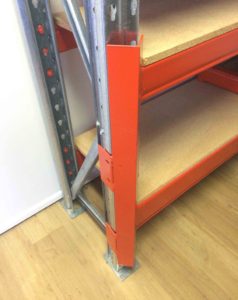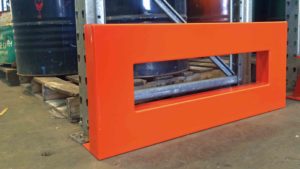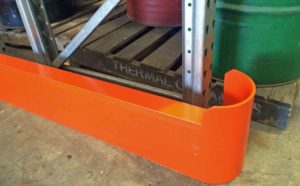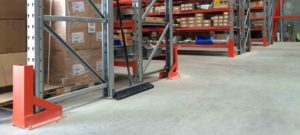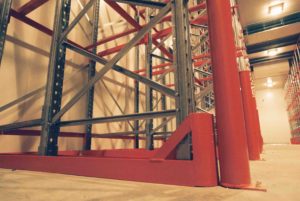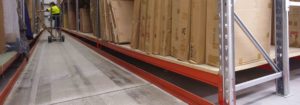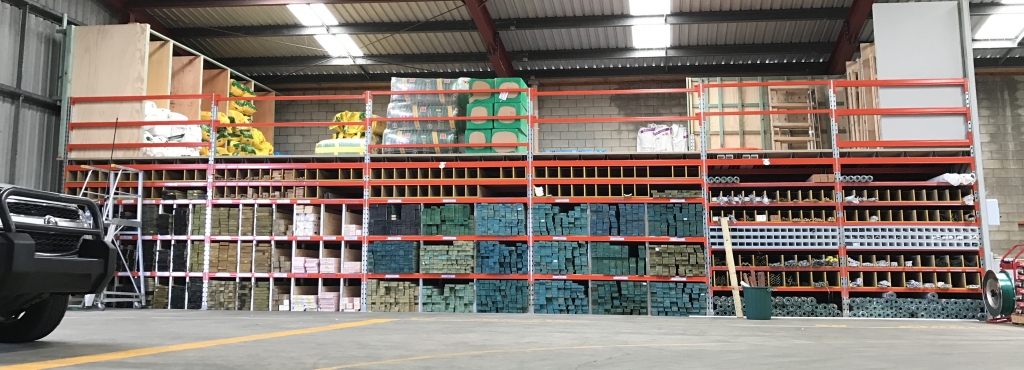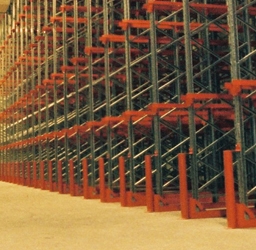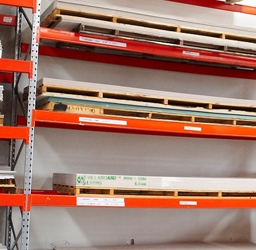Pallet racking is the foundation of any warehouse or storage facility. Optimised pallet racking can increase storage space and improve warehouse productivity. However, there are steps that need to be taken to ensure the safe use and maintain the structural integrity of a pallet racking system. The following is a list of 10 common pallet racking mistakes and how to avoid them.
1) Climbing Pallet Racking
Most warehouses have pallet racking or shelving that stores items out of arm’s reach. When you have 100 orders to pick and need a single product from a top shelf it can be tempting to quickly climb the racking to retrieve it.
However, inconvenient as they may seem, ladders, safety steps, and other similar equipment exist for a reason. Climbing pallet racking can not only lead to a racking collapse with loss of stock and thousands of dollars of damage. A collapsed pallet racking aisle can cause serious and even fatal injuries to nearby workers.
That is why it is essential that all warehouse staff are trained in the safe use of pallet racking. Enforcing consequences and disciplinary actions when racking is used improperly will help to avoid such accidents.
2) Overloading & Improper Use
 Overloading racking can cause irreparable damage to the frame of the system. This will lead to an eventual racking collapse or in some cases, an immediate one. To ensure that you do not overload your racking system make sure all team members using the system are aware of its load capacity.
Overloading racking can cause irreparable damage to the frame of the system. This will lead to an eventual racking collapse or in some cases, an immediate one. To ensure that you do not overload your racking system make sure all team members using the system are aware of its load capacity.
The load capacity of each shelf should also be clearly displayed to avoid confusion. The heaviest pallets or loads should be stored at the bottom of the racking towards the back of each shelf. Stacking products in any other way will damage the racking and could lead to a system collapse.
3) Ignoring Damage & Avoiding Repairs
When racking becomes damaged it can compromise the structural integrity of the whole system. It is important that all damage to racking is immediately reported and scheduled for inspections or repairs where necessary.
Collisions and overloading can lead to accidents or collapse. To reduce the risk of damage to your pallet racking system, ensure that anyone operating equipment in or near the racking is appropriately certified and licensed.
All warehouse staff should know how and where to report equipment damage to avoid any damage going unnoticed. It is also important to regularly inspect the pallet racking system for unreported damage.
Sometimes the damage may seem inconsequential however, there may be unseen resultant structural damage. Once damage to a racking system has been identified, repairs should not be delayed.
If immediate repair is not an option, the racking should be unloaded and marked with the appropriate signage to avoid further use until repairs can be made.
4) Unprotected Racking
Pallet racking and forklifts go hand in hand. And where there are forklifts, there are inevitably accidents. Whether it’s just the edge of the forklift clipping the corner of an aisle or a full head-on collision, forklifts can cause some serious damage to your equipment if you’re not careful.
Operator training can only go so far and even with the most well-trained forklift operators, a forklift is still likely to collide with your racking at some point. For a business, this can be disastrous and lead to days of clean up, thousands of dollars of damage and even staff injuries.
That is why it is essential to protect your racking!! No matter the business, product storage is the lifeblood of the company and something you need to protect. There are many warehouse protection products available including:
Angle Post Protectors – these are a low cost item that protects racking by diverting the force of the impact to either side of the frame.
Rack Bollards – these bollards are dyna-bolted to the ground at the front of the storage system. Rack bollards are used to absorb the full impact of a forklift collision.
Light-Duty Frame End Guard – these are designed to prevent damage to the end of the bays. This light-duty frame is suitable for use in areas with light forklifts and walkie stackers.
Heavy-Duty Frame End Guard – these are designed to prevent the ends of racking systems from more heavy duty machinery and larger forklifts.
Corner Post Protector – these are standalone units that are bolted to the ground to prevent damage to the corner of aisles. This is an area that is highly susceptible to forklift damage due to quick aisle navigation.
Drive-In Floor Channel – these channels protect the inner walls of drive in racking and help to guide the forklift down the bay.
Narrow Aisle Guard Rail – these are used to line the base of narrow aisle racking systems to allow easy navigation of narrow aisles without causing damage to the racking.
5) Exceeding A 6:1 Height To Depth Ratio
All racking should have a 6:1 or lower height to depth ratio. This is the height of your system divided by the depth of the shelves. If this ratio is exceeded, further safety measures are required to prevent overturning. These can include overhead ties or baseplates.
If you are not sure of the ratio of your racking system you should have the system independently inspected to verify its safety. When designing a new pallet racking system it is important to consult industry professionals to ensure all safety requirements and Australian Standards for the system are met.
6) Purchasing Used Pallet Racking
Used pallet racking systems are a cheap alternative to having a new system designed for your warehouse. However, most people don’t consider what they are sacrificing for the cost.
If pallet racking has been overloaded, stored outside or misused in any other way, the structural integrity of the system may be compromised. In many cases, pallet racking will appear undamaged however there could be underlying issues including internal rust and corrosion.
Buying used racking will also mean that the system is not designed specifically for your products and warehouse processes. This can significantly impact productivity and warehouse storage capacity.
In the end, it works out to be much more cost efficient to buy a system that is built for you and built to last rather than constantly paying to repair a glorified heap of scrap metal.
7) No Consideration For Expansion
When buying a pallet racking system it is important to consider how you will expand in the future. If you only buy what you need with no thought for later growth you could end up having to buy a brand new system 5 years down the track.
That is why it is important to know whether or not your pallet racking system can be expanded on and if other types of racking are compatible. When you buy racking, you should also make sure that it is from a reputable company to ensure that they will still be around when the time comes for repairs and expansion.
8) No Consideration For Equipment
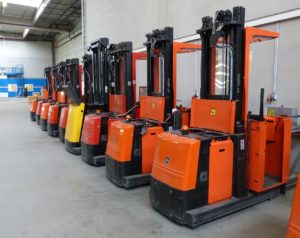
Just because you are buying a new pallet racking system, does not mean that you also have to buy new vehicles and equipment. If you don’t take into account the abilities of your existing equipment you may be faced with the task of replacing your entire fleet of forklifts and handling equipment.
Different forklifts are suitable to different racking styles. If not taken into consideration, you may end up with unused shelving where your equipment can’t reach. Or even worse, your forklift and racking may be completely incompatible leading to the large, avoidable expense of replacing your forklift.
9) Estimating Load Requirements
Estimating rather than calculating the load requirements of your racking system can lead to one of two disasters.
1) You overestimate the load requirements of your racking system and end up paying more than necessary for a heavy duty system that you don’t need.
2) You underestimate the load requirements of your racking and end up having to purchase additional racking. And if you choose not to purchase additional racking this could lead to a worst-case scenario of overloaded racking that causes a collapse.
As such an integral part of any warehouse, why take the risk? It is always better to calculate the weight of your pallets and the load requirements of each shelf before commissioning a new pallet racking system.
10) No Signage
Safe work load signs should display the weight limits of each racking system as defined by the original manufacturer. Additionally, racking systems should be independently audited annually including checks of each safe work load sign. Not only will this keep your racking in great working condition and prevent accidents, it is a requirement in accordance with Australian standards AS4084-2023.
If you’re looking for a customised storage solution for your warehouse call MACRACK on 1800 048 821 today. Ask us about our independent pallet racking audit service to ensure the safety of your warehouse.

